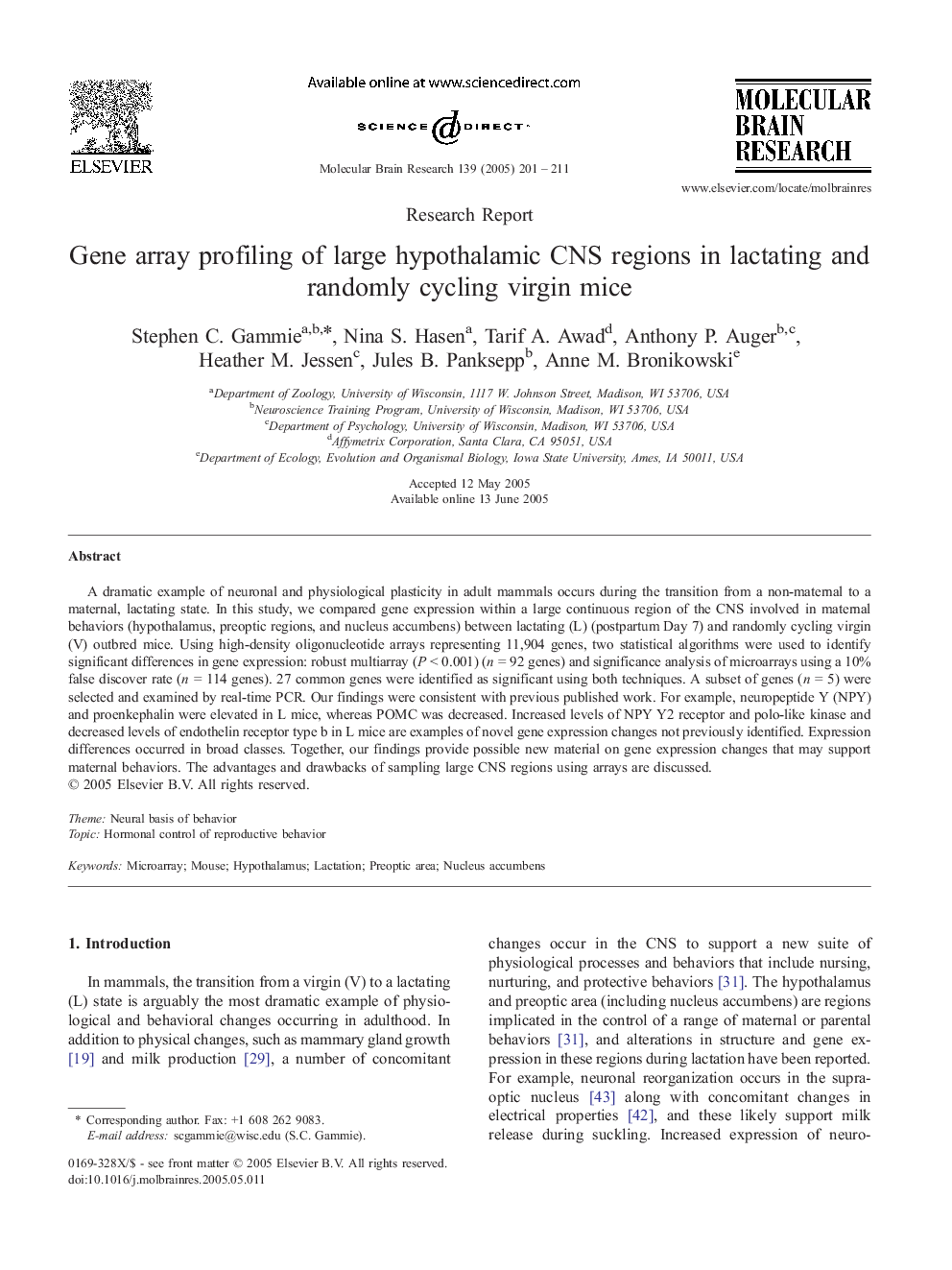| Article ID | Journal | Published Year | Pages | File Type |
|---|---|---|---|---|
| 9410595 | Molecular Brain Research | 2005 | 11 Pages |
Abstract
A dramatic example of neuronal and physiological plasticity in adult mammals occurs during the transition from a non-maternal to a maternal, lactating state. In this study, we compared gene expression within a large continuous region of the CNS involved in maternal behaviors (hypothalamus, preoptic regions, and nucleus accumbens) between lactating (L) (postpartum Day 7) and randomly cycling virgin (V) outbred mice. Using high-density oligonucleotide arrays representing 11,904 genes, two statistical algorithms were used to identify significant differences in gene expression: robust multiarray (P < 0.001) (n = 92 genes) and significance analysis of microarrays using a 10% false discover rate (n = 114 genes). 27 common genes were identified as significant using both techniques. A subset of genes (n = 5) were selected and examined by real-time PCR. Our findings were consistent with previous published work. For example, neuropeptide Y (NPY) and proenkephalin were elevated in L mice, whereas POMC was decreased. Increased levels of NPY Y2 receptor and polo-like kinase and decreased levels of endothelin receptor type b in L mice are examples of novel gene expression changes not previously identified. Expression differences occurred in broad classes. Together, our findings provide possible new material on gene expression changes that may support maternal behaviors. The advantages and drawbacks of sampling large CNS regions using arrays are discussed.
Keywords
Related Topics
Life Sciences
Neuroscience
Cellular and Molecular Neuroscience
Authors
Stephen C. Gammie, Nina S. Hasen, Tarif A. Awad, Anthony P. Auger, Heather M. Jessen, Jules B. Panksepp, Anne M. Bronikowski,
